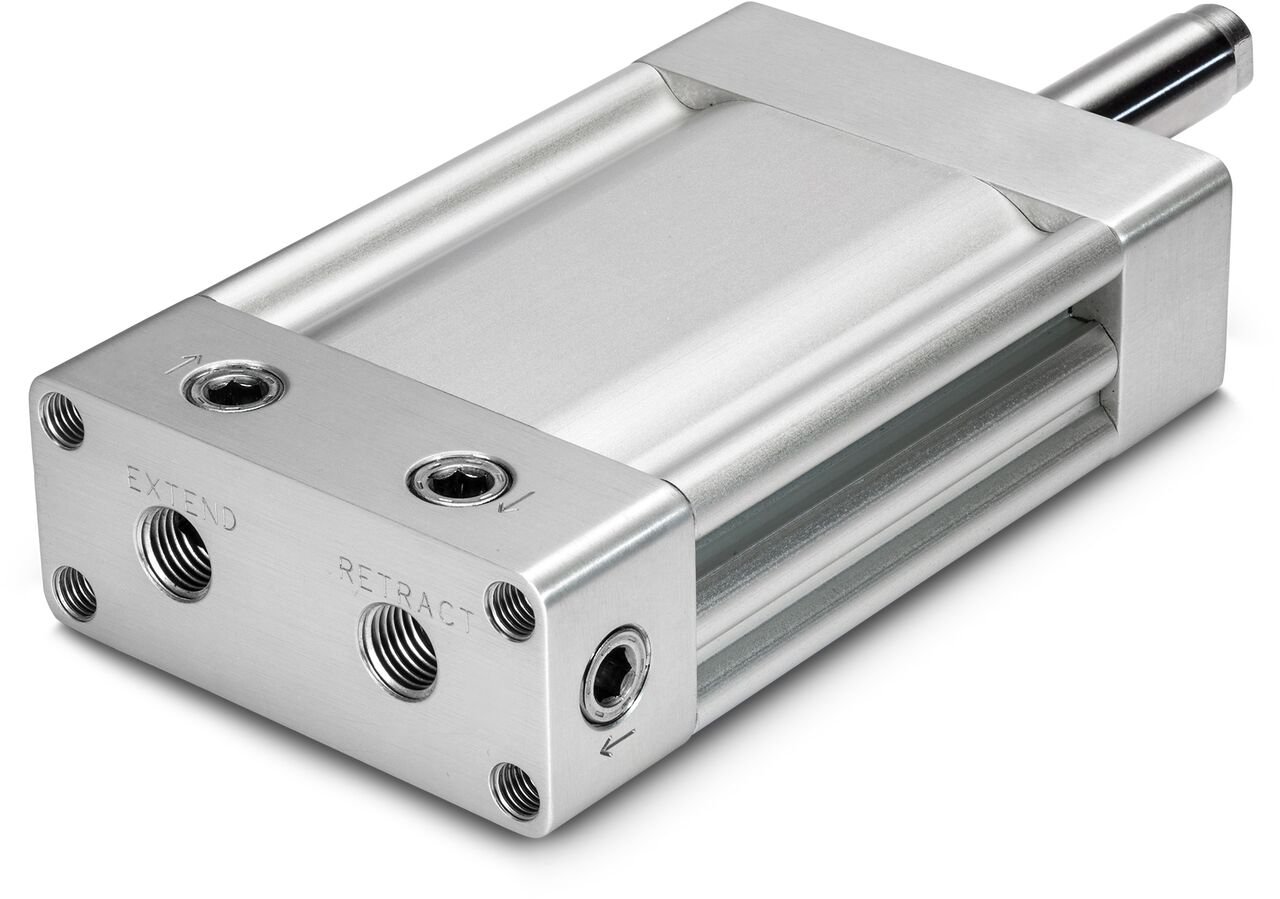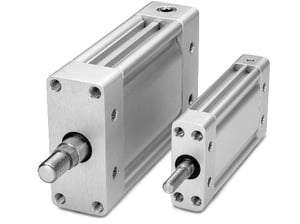
 Without actuators, everything would come to a standstill. That’s because actuators make things happen, literally keeping automated production plants moving, industrial doors operating, and so on. But they come in several styles, so how do you know which type to use?
Without actuators, everything would come to a standstill. That’s because actuators make things happen, literally keeping automated production plants moving, industrial doors operating, and so on. But they come in several styles, so how do you know which type to use?
Here are some tips to help choose between linear and rotary actuators.
Types of Actuators
The type of actuator you need depends on the movement you need to accomplish. Actuators can be broadly split into two categories: linear and rotary. The name says it all:
- Linear actuators move things in a straight line, forward and/or backward. Linear movement is described as distance (inches or millimeters).
- Rotary actuators revolve, so they can move things at any angle required. They can rotate a set amount — 90, 180, or 360 degrees, for example — or incrementally. They can also spin continuously. Rotary movement is described in degrees.
Linear Actuators
Linear movement is one of the most common design functions. You can find linear actuators in everything from your computer and gaming console to the most complex industrial equipment. In every instance, the actuator is designed to move a precise distance, then stop.
Linear actuators can be powered by air, hydraulic fluid, or electricity. Here at W.C. Branham, we make both pneumatic and low pressure hydraulic models. They are relatively simple devices, compact in size, highly reliable, and cost-efficient to use. Generally speaking, you would choose an electric actuator when you need extremely precise control, a pneumatic actuator when you need a defined stroke, quick response, a high force up to 4,000 pounds. Or you could choose a low pressure hydraulic actuator for slow, smooth linear motion at high force.
But of course, it is not quite that simple. While speed and force are two key considerations in deciding which type of linear actuator to use, there are a number of other factors that affect performance as well.
Rotary Actuators
Like linear actuators, rotary actuators can be pneumatic, hydraulic, or electric. Unlike linear models, they are not restricted by the distance they can travel or the need for infinite, repeated motion such as continuous spinning — noted above. An electric motor is a typical example of a rotary actuator.
You would use a rotary actuator when you need an angular travel path. Two good examples are a swing gate on a conveyor system that diverts a product from one direction to another or a device that lifts and turns a product to keep it moving at a different angle. Your design may actually call for a combination of rotary and linear actuators, working together to achieve the desired movement.
Every Challenge is Different
Precise repetition is critical when you’re designing automated machinery, and that means you have to use exactly the right actuator for the application at hand. If you’re having trouble deciding exactly which actuator that is, give us a call or email us. We’re always here to help you configure the right solution.
If you can't find what you're looking for, the best solution may be a custom-designed linear actuator. But if that’s the case, we’re up for that challenge. Actuators move things, and we’re all about Solutions in Motion.


